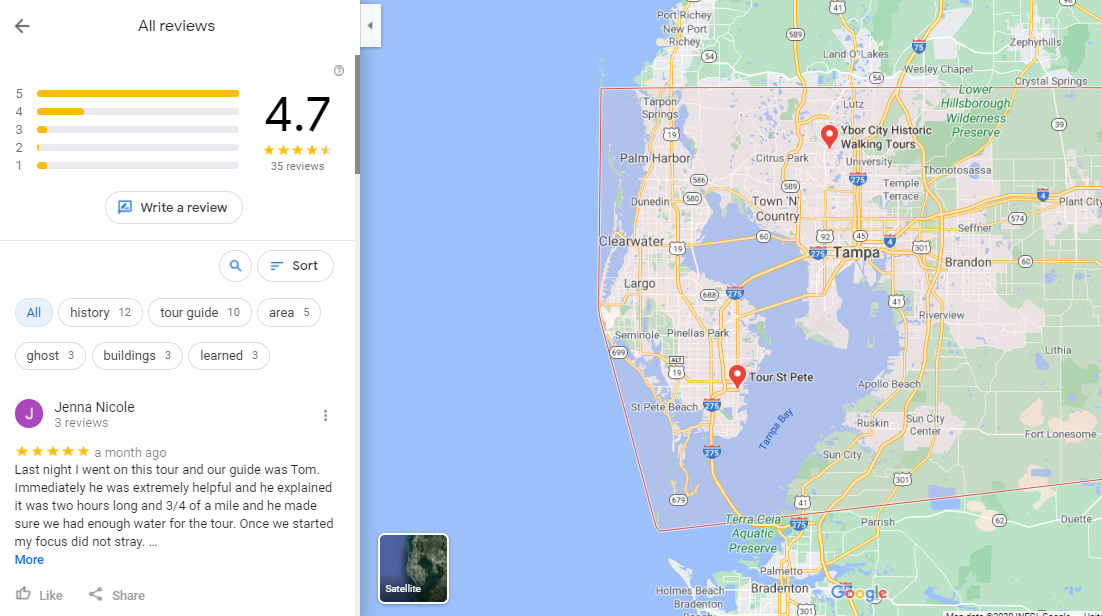How to Extract Helpful Info From Online Reviews in Yelp, TripAdvisor, Google Reviews, and More

Before almost every customer books a trip, eats at a restaurant, or tries a new experience, there’s one thing they tend to do nowadays — read reviews. A majority of consumers are doing travel transactions online from booking a flight, making a hotel reservation, securing a car rental, to hiring a tour guide. This makes tourism platforms like TripAdvisor, Yelp, and Google My Business, a hit with web users as they can learn about services before patronizing them. When you can’t decide between two resorts, or if a $15 avocado toast is worth it, online reviews will help you make informed and thought-out purchase decisions.
Word-of-mouth has been a critical factor when it comes to a brand’s credibility. But in today’s digital age, online reviews carry as much credibility as personal recommendations from people you know. A consumer survey shares that 91% of consumers between the age of 18 to 34 trust online reviews, although it comes with conditions. Interestingly, 24% of the 91% will only trust a review if they believe it’s REAL and 20% will do so if it’s backed by several other reviews. They also require at least 40 online reviews before believing its average star rating. In another survey, it was found that 92% of consumers hesitate to make a purchase when there are no customer reviews.
Unfortunately, fake online reviews, sometimes paid, are starting to invade different review platforms. This problem has been confirmed by the Federal Trade Commission, which also took necessary actions against fake reviews since last year. “When a company buys fake reviews to inflate its ratings, it hurts both shoppers and companies that play by the rules,” said Andrew Smith, Director of the FTC’s Bureau of Consumer Protection. According to Fakespot, a site that analyzes fake reviews and counterfeits, 1 in 3 reviews at TripAdvisor, Amazon, and Walmart are unreliable. While major sites do analyze and screen reviews, many fake ones still get through.
So how will you know if a review is real or fake? Don’t look for an overall five-star rating. Follow these tips in finding genuine reviews, extracting helpful information, and using it to make an informed decision:
TripAdvisor
People planning their vacations visit TripAdvisor for options on where to stay or where not to stay. While information from the travel site is helpful, fraudulent reviews can also appear on the restaurants, hotels, and tourist attractions in their directory. What’s more, TripAdvisor rankings are also incredibly easy to manipulate. What you can do is cross-check the hotel reviews at Booking.com and Expedia. These sites only accept entries from travelers who booked through them. For restaurant reviews, you can cross-check them at Eater, OpenTable, or Bon Appetit for the same reason.
If the reviewer sounds like he or she works at a hotel or restaurant, then they probably do. Be wary of comments that use repetitive words and those that point out deals, discounts, and promotions. If the posted photo looks like it’s taken by a professional and too good to be true, it probably is. If you have a specific concern about an establishment’s accessibility, you can search all reviews and type in ‘handicap’.
Yelp
Business owners on Yelp are not allowed to ask customers for reviews as stated on their Terms of Service. Their Ghost algorithm identifies and detects reviews in which businesses asked their customers to leave a review. Yelp also filters out reviews that appear unnatural and places them in it’s ‘not recommended’ section. But even with these measures, fake Yelp reviews still get posted. There are instances wherein competitors make fake profiles in order to make other companies look bad.
When reading reviews on Yelp, check the profile photos of users. Those who are engaging in review schemes tend to use stock photos or no photos at all. Doing a reverse image search will also help. Next, look at the businesses that the user has reviewed over time. If the user has been posting reviews in multiple states, writing a large number of five-star reviews, or reviewing several businesses in the same niche, then it’s a reason to be suspicious of the review. Search for what’s important to you – such as ‘clean’ in a restaurant, ‘loud’ in a restaurant, or ‘waiting time’ in a doctor’s office.
Google Reviews
Hotels, restaurants, and other tourism-related businesses are 100% location-driven so they’re easy to spot on Google Maps. Ratings and reviews are also readily available for interested customers. Here’s the problem: anyone can leave a customer review on Google – all you need is a Gmail account. How will you know if the review is genuine and not written to promote or slander an establishment? One way to check a review’s legitimacy is to examine the reviewer’s name and avatar, and see if they’ve reviewed other businesses.
People who write fake reviews create fake accounts and often submit reviews in bulk. If you notice a reviewer leaving multiple reviews for various businesses on the same day, they are likely fake. It also helps to pay attention to the details in the review. Fake reviews often include convincing statements that sound persuasive or lack specific details. For instance, a Cornell University study found that fake hotel reviews included more information about a reviewer’s family than their hotel experience. When reading Google reviews, you can search for keywords that you’re interested in. With a walking tour, for instance, you can look for terms like ‘haunted building’, ‘history’, ‘paranormal’, ‘architecture’, or ‘night walks’.

Amazon
People tend to go to online retail sites like Amazon when buying gadgets, gear, clothes, and other essentials for a trip. In reading Amazon product reviews, look for the “verified purchase” badge next to the reviewer’s name. This means the user actually bought the product. Then, check the time and date that they were posted. It’s unusual for an Amazon review to appear over the course of a day or two. It could mean that they are not from legitimate buyers. In most cases, users post their feedback over weeks, months, and even a year after the product was bought. Statements that are overly short such as ‘very good’, ‘amazing product’, or ‘will buy again’ could also suggest fake reviews. Authentic reviews are more likely to be detailed, commenting on the product’s quality and functionality, and address both pluses and minuses. There are also free Amazon review checker sites available online, such as ReviewMeta and Fakespot, that assess the trustworthiness of customer ratings and feedback.
Make sure to do routine checks such as looking at timestamps of reviews, user profile photos, and language choices. Scheming reviewers tend to overuse “I” and “me” and a lot of verbs. Repetition of words or phrases are also common. According to a study conducted by MIT, the use of repeated exclamation points in a review could mean it is written by a user who has never made a purchase. The ongoing presence of fake reviews show us that online reviews have become a big part of the consumer decision-making process. This is a cause for concern because it can mislead consumers to spend money on a product or service they may not have chosen otherwise. Fake reviews also rob revenues that other businesses may have earnt.
A 2019 research by BrightLocal found that 82% of consumers have read a fake review. The fact that some marketers spend huge amounts of time, energy, and resources into fake review spamming indicates just how valuable it can be for a business or brand to gain high ratings through a decent number of reviews. But businesses who are into these schemes should also be prepared for the consequences — over and above reputational damage which could give competitors an advantage.


